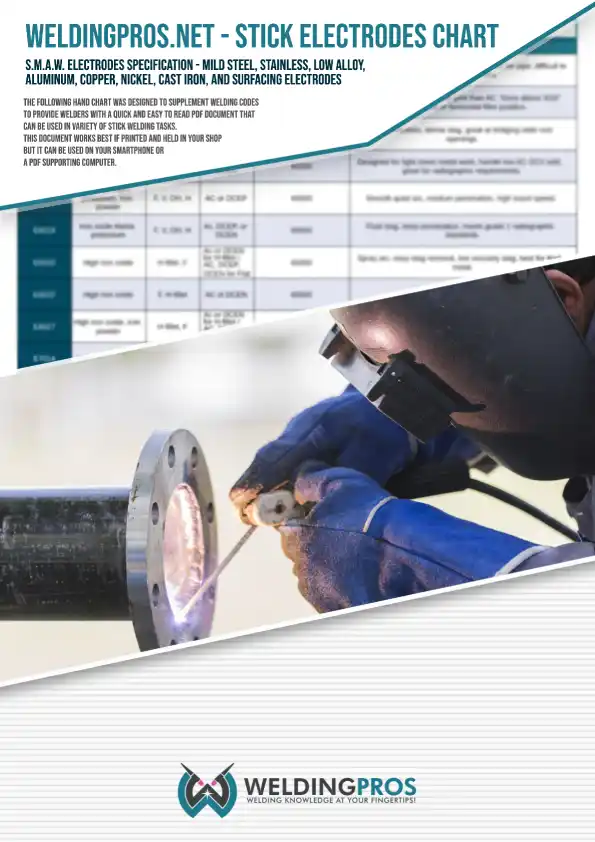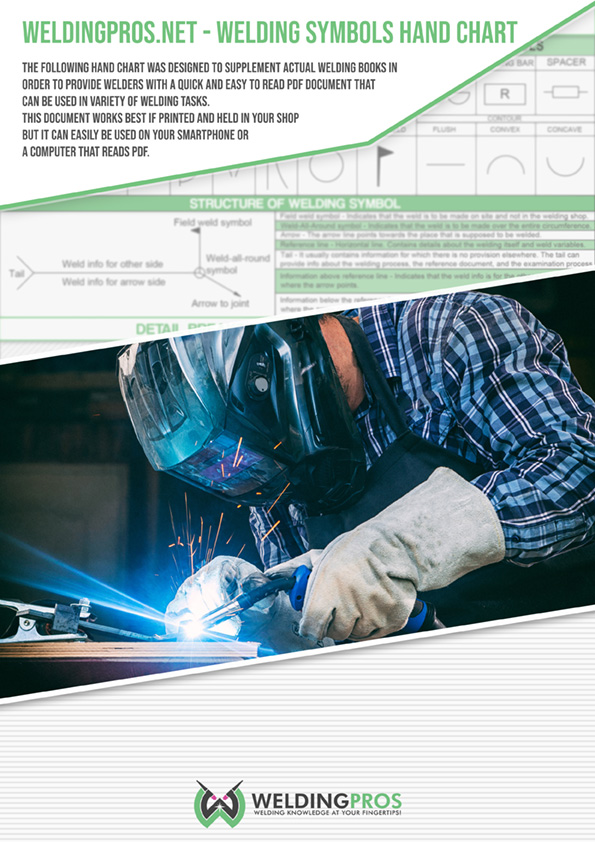For a long time, a black iron pipe has been considered a top-tier solution in gas lines and even water lines, but it is slowly getting out of service. However, you might have noticed it even in your home, as it has a distinctive black exterior that fits the name.
Since it is not so widely used today, many wonders, can you weld black iron pipe? The answer is yes, and in this article, we will explain why it is possible, and how to weld black iron pipes.
![Welding Black Iron Pipe - Weld Quality & Potential Safety risks [2025] 1 Featured image for the Welding a Black Iron Pipe article](https://weldingpros.net/wp-content/uploads/2022/04/Welding-a-Black-Iron-Pipe-1024x563.webp)
What is a Black iron pipe?
To understand how and why welding black iron pipe works, we will first discuss the properties. You should know that black iron pipe is actually made of steel despite its name. The term “black pipe” is used in industry to distinguish galvanized steel pipe and regular mild steel pipe.
Therefore, since the black iron pipe has carbon steel pipe specifications, it is clear that you can weld it. So don’t be mistaken with the iron in the pipe’s name. In addition, it is not an ordinary iron pipe, just colored with black paint.
What’s Different Between the Black Iron Pipe and Galvanized Steel Pipe?
The main difference between black steel pipes and galvanized pipes is the coating. A black iron pipe has a dark iron oxide coating that somewhat improves corrosion and heat resistance and gives it that distinctive ebony color. Therefore, the black layer is not just painted; it is also protected. In addition, a black pipe can be treated with coal, tar, enamel, lacquer, or oil for added protection and a shiny look.
On the other hand, galvanized pipes have completely opposite, silvery look. As you might have guessed, the reason is coating. Galvanized pipe is dipped into hot zinc, creating a protective layer that works against corrosion and makes it stronger than a black pipe.
Overall, black iron pipes show excellent heating resistance, and that’s why they are often used as part of fire sprinkler systems. In addition, it is still used to carry compressed air, natural gas, propane, and steam. On the other hand, they show somewhat lower corrosion resistance. Galvanized pipes are much stronger and offer better corrosion resistance, but they are usually more expensive. In addition, welding can cause poisonous zinc oxide fumes.
![Welding Black Iron Pipe - Weld Quality & Potential Safety risks [2025] 2 stacked black iron pipes](https://weldingpros.net/wp-content/uploads/2022/05/black-iron-pipe.webp)
![Welding Black Iron Pipe - Weld Quality & Potential Safety risks [2025] 3 galvanized steel pipe](https://weldingpros.net/wp-content/uploads/2022/05/galvanized-steel-pipe.webp)
Welding Black Iron Pipes
Once you consider the composition and properties, you know you can weld black pipe. Since its base composition is mild steel, you can weld black iron pipe using an arc welding process you prefer (Stick welding, TIG, MIG, Flux core). However, there are a couple of issues you should be aware of.
Before you start to weld black iron pipe, you should spend some time preparing the surfaces. To avoid unnecessary toxic fume exposure and poor quality weld, you should remove the protective layer. You can remove the oxide layer by grinding or using a wire brush.
![Welding Black Iron Pipe - Weld Quality & Potential Safety risks [2025] 4 welding black iron pipe at the field](https://weldingpros.net/wp-content/uploads/2022/05/welding-black-iron-pipe.webp)
However, as we noted, a black pipe can also be treated/coated, so make sure you remove oil, lacquer, enamel/tar, and any dirt or dust. Next, you should know that threaded pipe joints may have Teflon tape. Once it starts burning, Teflon can produce toxic fumes, so you should try to remove it or avoid welding.
Once you have finished the preparation, use any favorite welding processes. You can use arc, also called stick welding, or MIG/Flux core if you prefer working with a welding gun. Regardless of the process, you will achieve pleasant and professional weld quite quickly, as long as you follow our guidelines.
Welding Black Pipe Fittings
When welding malleable black iron fittings, you should be extra careful. Since fittings are made from malleable iron, it tends to melt at a temperature above 1700℉. Once they melt, the composition will change back to cast iron. Cast iron is brittle and fractures readily, so try to braze weld malleable iron fittings at low temperatures to keep the excellent weld properties.
Another option is using forged steel fittings. They perform better at higher temperatures, so you don’t have to worry about embrittlement and fracturing. You can use any preferred welding process to weld forged steel fittings, and they come in various sizes.
![Welding Black Iron Pipe - Weld Quality & Potential Safety risks [2025] 5 black iron pipe fittings](https://weldingpros.net/wp-content/uploads/2022/05/black-pipe-fittings.webp)
Can You Weld Black Iron Pipe To Other Metals?
Knowing that black iron pipe is made of regular mild low carbon steel, it is obvious you can weld it to most steel grades. However, welding black pipe to metals other than steel is not generally recommended.
Even though it is possible, there are various things you should consider, such as heat treatments, electrochemical differences, or solubility. Therefore, the level of skill and knowledge is well beyond the level of many hobbyists and beginner welders.
Safety Concerns About Black Pipe Welding
If you decide to weld black iron pipe, there are several concerns you should be aware of. Even though removing the mill scale and oxide layer will help you reduce fumes, welding still carries certain risks.
Poisonous fumes are present even with ordinary welding processes, such as Stick/arc welding. Therefore, you shouldn’t disregard them even when working with a black metal pipe or any other distinctive welding materials. In addition, you should take care of shock and injuries.
Fume Exposure
Even though black steel pipe doesn’t contain a protective zinc layer, you should still protect yourself from fumes. Of course, protective gear is always the best solution, but working in a well-ventilated area will reduce the overall risks of welding fumes.
Studies have shown that long-term exposure can have severe consequences and, in the worst-case lung cancer. Therefore, always wear a mask or respiratory protective gear and work in a well-ventilated area.
Electric Shock
When dealing with electric currents, there is always a risk of shock. It can happen due to poor equipment, broken connections, or changing the wire. Even though most common welding shocks are not life-threatening, you should still reduce the risks.
Injuries and burns
Welders are no strangers to injuries and burns, and the same thing can happen when welding black pipes. For instance, a small part of a black pipe can fall and damage your toes. In addition, since we are talking about molten metal, there is always a risk of burns.
To prevent any injuries, make sure you wear adequate PPE. In addition, practice safety measures by checking up the gear prior to welding. Understanding the risks is as important as understanding how to weld black iron pipe or black pipe fittings.
Resources
- https://weldtalk.hobartwelders.com/forum/weld-talk-topic-archive/welding-processes/20102-welding-black-iron-pipe
- https://www.mig-welding.co.uk/forum/threads/black-iron-can-i-weld-it.1636/
- https://www.engineeringchoice.com/welding-black-iron-pipe/
- https://www.ehow.com/how_8763214_weld-black-iron-pipe-steel.html
- https://forum.millerwelds.com/forum/welding-projects/1089-black-iron-can-i-weld-it





